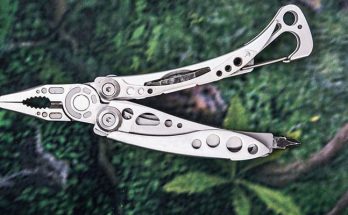A wristwatch is one of the most noticeable items in a man’s outfit. Because it is one of the few pieces of jewelry that most men feel comfortable wearing (apart from a wedding or class ring), it is also one of the few chances for them to fully express themselves. In this article, we would like to introduce the Best nearly non-conductive watches for electricians, which have covers and bracelets almost made of plastic.
Quick Comparision
Image
Product

Best watch for overall: Casio Men’s Quartz AE-1500WH-1AVCF
Editor's Rating: 9.7
Brand: Casio
Check Price

Best High-end watch: Garmin 010-02064-01 Instinct, Rugged Outdoor Watch
Editor's Rating: 9.4
Brand: Garmin
Check Price

Best durable watch: Casio G-Shock Men’s Mudmaster
Editor's Rating: 9.1
Brand: G-Shock
Check Price

Best value watch: Casio G-Shock Rangeman Solar Watch
Editor's Rating: 8.8
Brand: Casio
Check Price

The Runner-up watch: Casio G-Shock Quartz Shock Resistant
Editor's Rating: 8.7
Brand: Casio
Check Price
Buying Guides
If you’re going to spend more than $100 on a watch, you should know what you’re getting into. Because of the name, you could theoretically go out and spend $2 million on a watch.
However, you are most likely looking at paying $500-7,000 and are unsure of the best method to go about it. Here’s everything you need to know to make an informed purchase, beginning with materials, movement, and case size.
1. Materials
When choosing materials, it is critical to examine the case, band, crystal, and movement.
The case is the exterior covering, which is usually made of metal and is intended to protect the inner workings. When selecting case materials, keep both style and durability in mind. Style is defined by what you think looks nice; durability is determined by how you utilize the watch.
Are you a regular swimmer, for example? Some casings are designed to keep water out of the watch. Even if the closest you come to water is cleaning the dishes, getting a water-resistant watch is a good idea.
Stainless steel is the most commonly utilized case metal in high-quality watches. Because it resists tarnishing and discoloration, stainless will last a lifetime. Consider titanium, a newer option that is gaining popularity since it is as strong as stainless steel but not as heavy on the wrist.
Solid gold in various karats (not gold plated) is pricey, but it is the standard for elegant men’s and women’s watches – however, gold can appear showy and is not a look that every man or woman feels comfortable wearing.
To be honest, a nice platinum watch will most certainly set you back $20,000 or more. This might be something to strive for. Platinum is used to make beautiful timepieces for both men and women.
It is a naturally white metal that does not change color over time, making it ideal for a heritage item. Because platinum is a more dense metal than gold, it is much heavier, therefore males may be more comfortable wearing large platinum watches than ladies. If you are allergic to metals or chemicals, you should know that platinum is hypoallergenic and may be worn regularly without causing any problems.
Ceramic, particularly white ceramic, has recently been a favorite watch material among ladies due to its distinct appearance and designer cachet. However, it is available in a variety of various hues (including seafoam green and bright purple), making it an excellent trademark item.
As an electrician, you should only wear plastic watches; if you want to wear high-quality metal watches like the ones we listed above, make sure you’re in a non-electrical area.
2. Bracelet or strap?
The band is another important factor to consider when selecting the best watch for you. Bands are classified into two types: bracelets and straps.
Bracelets are composed of interlocking metal links, which are often made of the same material as the casing. By adding or deleting links, bracelets may be adjusted.
Bands are available in a variety of leathers, rubbers, plastics, fabrics, and other materials, and may significantly alter the appearance of a watch. Sport watches are frequently equipped with a strong rubber or nylon strap to withstand strenuous outdoor activity.
Certain women’s fashion watches come with complimentary leather, rubber, or plastic bands that can be swapped out to match different outfits, and men may always increase their style options by purchasing additional bands as well. When it comes to bands, the color options are virtually limitless.
3. The crystal
If you’re new to purchasing high-quality watches, you might not have considered the crystal. The watch crystal is a protective covering made of glass, plastic, or synthetic colorless sapphire that fits over the watch face. The type of crystal used will be determined by the price of the watch.
Unusually, you’ll come across an acrylic crystal in a high-end watch. Acrylic is a lightweight, low-cost material. This is commonly used in sport watches since it does not shatter or break.
However, it scratches quickly, which might detract from the watch’s appearance. Deep scratches might also allow moisture to enter the watch, damaging the mechanism.
Mineral glass is ordinary glass that has been heated- or chemically treated to withstand a beating. It is more scratch-resistant, yet it can break or shatter in severe situations. Then there’s sapphire crystal, which isn’t composed of sapphire and is featured on nearly all watches costing more than $500.
Because it withstands scratches better than the others, this synthetic compound with the same physical, chemical and optical characteristics as genuine colorless sapphire are the preferred material of high-end watchmakers. It does, however, shatter more easily than acrylic. The surface can only be scratched by a diamond or another sapphire.
4. Movement
Watch lovers may spend hours debating the merits and disadvantages of movement – how a watch works. We’ll restrict it to a few paragraphs regarding each of the three types: There are three types of clocks: mechanical, quartz, and automated.
A mechanical movement is extremely antiquated. It employs a spring that is coiled by hand via a button on the side of the watch (the crown). Aficionados of timepieces prefer vintage watches with mechanical movements as well as modern creations created in this manner.
Their interest is piqued by craftsmanship. What you need to know is that you will need to “switch on” this sort of watch by hand winding it – which means that if you forget, you will have to rely on your phone to tell time. Mechanical timepieces can lose or gain up to 10 seconds every day, which is important to remember if you live or die by the 7:22 train home.
Quartz is maybe the most well-known clock mechanism. Quartz movement employs a small sliver of quartz that vibrates at a certain frequency when power is applied to it. This power is provided by a battery, which should be replenished once a year or so.
Quartz movement watches are less expensive for manufacturers to produce, therefore you’ll find them in the cheapest watches. Many watchmakers label their movements as “Swiss quartz,” although there is little to no distinction between “Swiss” quartz and other quartz these days. It’s also worth noting that ordinary quartz timepieces are highly accurate.
Finally, there are self-winding – or automatic – movements. These clocks are powered by the energy you generate every day by swinging and moving your arm. Even if this is your only watch (i.e., you wear it every day), you should reset it once a month or so since these watches frequently gain or lose a few minutes.
However, it would be a good idea to additionally buy an automatic watch winder, which softly winds the watch. Watch winders that operate quietly and slowly can cost a couple of hundred dollars (they can also be works of beauty in their own right, displaying your watches when they’re not in use), but they’re well worth the investment if your automatic movement collection grows.
5. Case Size
If you’ve been examining wrists recently (which isn’t as weird as it sounds), you’ll notice that watch case size is increasing. Case diameter is measured in millimeters, with the typical female case diameter being 34mm or less. The normal men’s case diameter is usually at least 40mm or somewhat more than one and a half inches. However, it is not uncommon to find case sizes of 48, 50, and even 55 mm (2.2 inches). And those colossal faces aren’t only for males. Women are no longer afraid to make a statement with a large-faced watch.
But here’s what you should think about, whether you’re a guy or a woman. Is the watch too much for you? Does the size appear out of place on your wrist? When it comes to size, sometimes large is just big. A basic design in a thin casing may be preferable to one that is showy and large. A large classic rectangular timepiece, for example, contrasts a large circular chronograph. Consider what you want your watch to say about you.
6. The right time
The style of a watch should be appropriate for the occasion you’re going or how you typically spend your days.
Formal watches are required for black-tie occasions (not the ones you use when you go mudding). A watch with a simple white or black face and a leather band is ideal for a man. A woman should wear a traditional rectangle in a smaller, delicate size that complements the metal of her other jewelry.
Chronographs are distinct and valuable devices. A chronograph is a timepiece with at least one “sub-dial” (typically more) that serves as a stopwatch. Because many of these watches have significantly bigger case diameters to accommodate the extra dials, they might appear hefty and impressive. That aesthetic, along with the chronograph’s status as a complicated work of art and science, is why so many individuals who don’t require the utility wear them.
If you want a watch that is unique to you, try a brand like Michele, which allows you to select the band and case independently (your jeweler will put them together for you). Online watch configurators make it simple and enjoyable to design a watch that matches your style and personality.
Stainless steel in a traditional bracelet for men or women is unbeatable for a style that fits with everything. However, the white ceramic clock is slowly working its way toward that level as a female alternative. Look for watches with textured leather straps, which add a touch of class. A watch with a dial composed of glossy white mother-of-pearl or surrounded with diamonds might be a lovely, shimmering choice if the occasion calls for something a little extra.
Apply this knowledge to your style as well as how you want to utilize your new timepiece. Your style might be antique or modern, over-the-top or understated. However, if you understand the fundamentals of what goes into a high-end watch, you will be able to match your style needs to the quality standards and obtain something exceptional for yourself.
Top 5 Best nonconductive Watches for Electricians
Conclusion
In summary, wearing a watch when working with electricity is extremely dangerous, therefore only wear it while not working with electricity. In this post, we have selected 5 watches with the most plastic casings for electricians; we hope you find this information beneficial.
Because the watch contains metal, which is conductive, you should not wear it when working with electricity to prevent producing an electrical discharge. We’ve chosen the best nearly non-conductive watches for electricians which have most of their casings made of plastic save for the metal case back, but which nevertheless contain metal within.
You should wear this watch only while not working with electricity, when working with minimal power, or when all power has been turned off. We are not liable if you use the goods listed below and have an accident while working.



